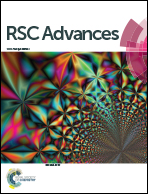Metallic VO2 monolayer as an anode material for Li, Na, K, Mg or Ca ion storage: a first-principle study
Abstract
Using density functional theory (DFT), we assess the suitability of monolayer VO2 as promising electrode materials for Li, Na, K, Mg and Ca ion batteries. The metallic VO2 monolayer can offer an intrinsic advantage for the transportation of electrons in materials. The results suggest that VO2 can provide excellent mobility with lower diffusion barriers of 0.043 eV for K, 0.119 eV for Li, 0.098 eV for Na, 0.517 eV for Mg, and 0.306 eV for Ca. The specific capacities of Li, Na and Mg can reach up to 968, 613 and 815 mA h g−1 respectively, which are significantly larger than the corresponding value of graphite. Herein, with high open-circuit voltage the VO2 sheet could be a promising candidate for the anode material in battery applications.



 Please wait while we load your content...
Please wait while we load your content...